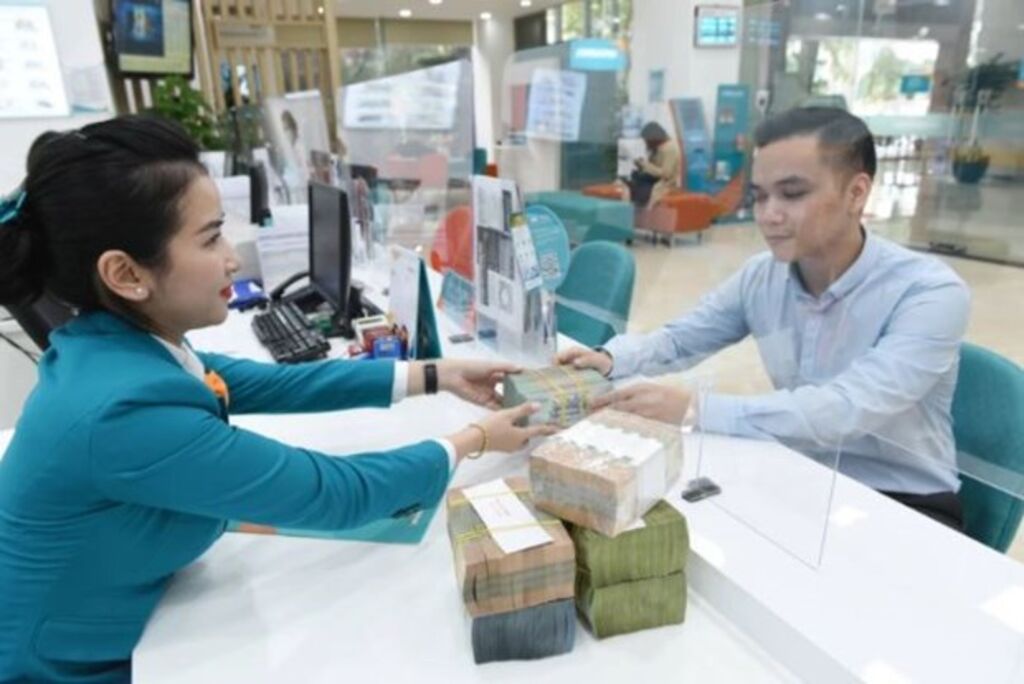 |
| Vietnam's banking system posts credit growth of 13.5 percent in 2023__Photo: VNA |
Vietnam’s credit growth reached around 13.5 percent in 2023 although unprecedented developments of the global economy posed formidable challenges to the country’s monetary policy, Deputy Governor of the State Bank of Vietnam (SBV) Dao Minh Tu said on January 3.
According to Tu, the result was spurred by the drastic direction of the Prime Minister and resolve of the banking sector in the past year.
Earlier, the central bank set a credit growth target for the year at about 14-15 percent, with flexible adjustments in accordance with the actual development so as to stabilize the macro-economy and support economic growth in a rational fashion.
The SBV rolled out an array of measures, policies and programs to ensure sufficient capital for the economy, helping the country achieve the GDP growth rate of around 5 percent, the official stressed.
Focus was sharpened on the completion of legal framework on lending as well as the simplification of lending procedures, the strengthening of the connectivity between commercial banks and enterprises across the nation, and the development of special credit programs.
Tu said the central bank has set a credit growth target of 15% for the domestic banking system in 2024, with possible adjustments in line with the development of the macro-economy and inflation rates.
The bank will continue directing credit institutions to prioritize capital for critical spearheads - investment, consumption and export that drive the economic growth, the official said, adding it will strictly control the credit in potentially risky areas.
Additionally, the central bank will accelerate the implementation of the national target programs, create favorable conditions for businesses and local people to get access to capital, and remove bottlenecks in the expansion of consumer credit so as to combat loan sharks.
The Government leader told the sector to improve the effectiveness of and reform state agencies’ management over sports, facilitate private parties’ engagement in sports development, devise mechanisms and policies for promoting sports economy, and reform the mass sports movement.
In addition, the PM ordered strongly reforming tourism promotion methodology, developing a smart tourism ecosystem in tandem with conducting digital transformation, enriching experiences for tourists, and stepping up green technology application so as to reach the targets of 18 million international tourist arrivals, 110 million domestic visitors, and VND 850 trillion (USD 34.8 billion) in tourism revenue this year.
He asked the sector to strengthen connectivity within each region, among different regions, and with other countries in cultural, sports, and tourism affairs.
It is also necessary to ensure equal access to culture, sports, and tourism, particularly for residents in rural, remote, border, and marine areas and for vulnerable groups, PM Chinh emphasized.
Looking back on the sector’s performance last year, participants said major national and inter-regional cultural, sports, and tourism events were held and received warm response from people and tourists.
In particular, thanks to creative methods adopted and policies issued to tackle bottlenecks, tourism recovered quickly with about 12.5 million international visitors attracted to Vietnam - exceeding the initial target of 8 million and rising 3.5-fold from 2022, and 108 million domestic visitors – 5.8 percent higher than the target.
Cultural industries were fostered while sports activities received more investment. At the 32nd Southeast Asian Games (SEA Games), the Vietnamese delegation for the first time topped the medal standings of a SEA Games held in another country, the conference heard.- (VNA/VLLF)









